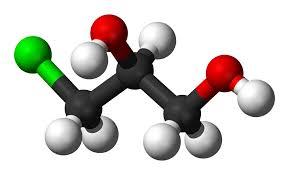Classified as process contaminants
• 3-monochloropropane diol (3-MCPD)- Possibly carcinogenic to humans1
• 3-monochloropropane diol ester (3-MCPDE)- Harmful to kidneys (EFSA2 report 2016)
• Glycidyl ester (GE) Probably carcinogenic to humans1
1 Classification by International Agency for Research on Cancer
2 European Food Safety Authority
1978 - Known food contaminant in hydrolyzed vegetable proteins (HVP) and
found in a wide range of daily food
2008 - Glycidyl esters (GE) detected in palm oil but 3-MCPDs and GEs not
found in virgin oils
2013- European Food Safety Authority (EFSA) identifies margarines, preserved
meats, bread and vegetable oil as major sources of 3-MCPD
Jan 2018- EFSA sets the tolerable intake daily for 3-MCPDs at 2 μ g/kg body
weight/day ( 0.002 ppm/kg body weight)
2020 and beyond Variable, but definitely at a very low rate
• 3-MCPD and its esters are formed in heat-processed, fatty foods
from glycerols or acylglycerides in the presence of chloride ions.
Much of the 3-MCPDE found in foods is present as fatty acyl esters.
• contributing Factors to 3-MCPDE in refining of palm oil:
– Presence of chloride in the crude palm oil (CPO), bleaching clay and steam
– Acid degumming and acid-activated bleaching clay
– High temperature during deodorization
• GE is formed from diacylglyceride (DAG) and monoacylglycerols (MAG),
at temperatures above 230°C. GE is correlated with DAG content.
− DAG in palm oil is between 6–12 whereas% normal seed oil is 1–5%
Mills
• Early removal of chlorides most effective
• Overall lower utility cost
• Evaluate equipment maintenance cost (less cost if displacing existing purifiers)
• Easier for effluent handling
• Existing vacuum system can be used
Refineries
• Ability to receive crude palm oil from various sources
• Ability to handle high processing volume
• Centralized test equipment
• Easier access to skilled workers
• Need to install a new vacuum system






